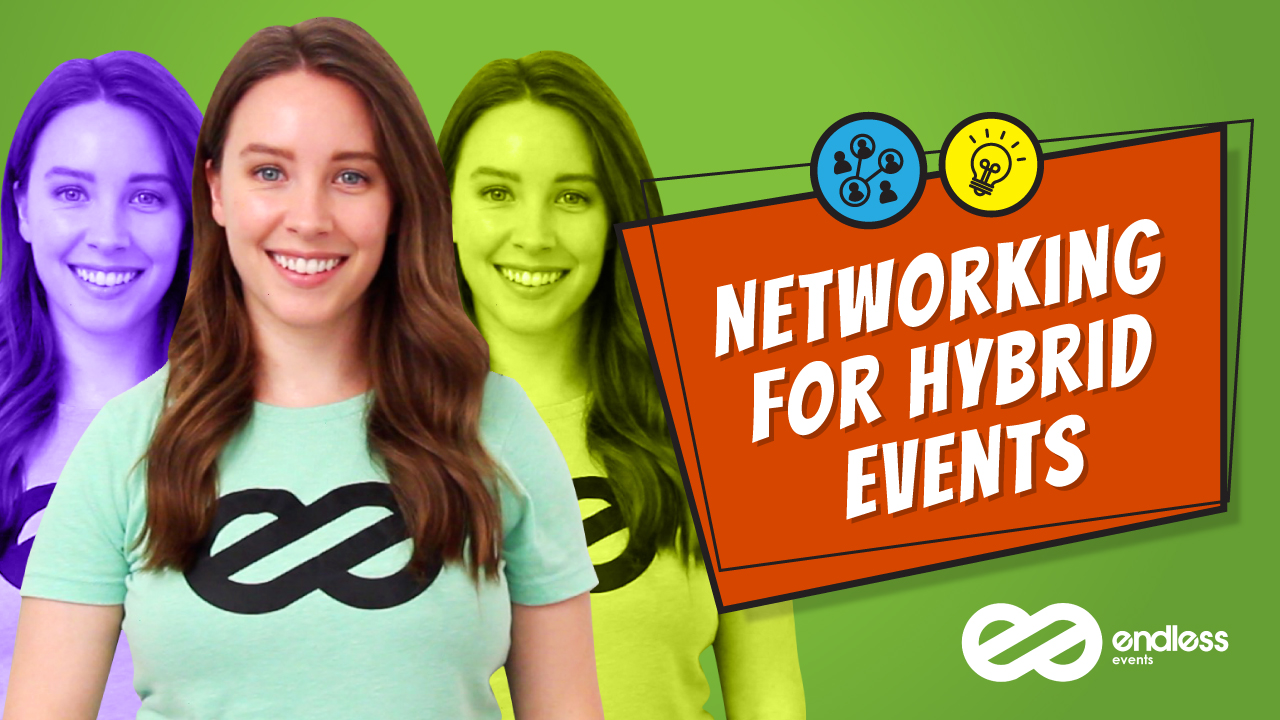
As event planners learn how to transition into the hybrid model, they must acknowledge it comes with its own set of challenges. And one of the most complex pertains to networking for hybrid events. Because this time around, you don’t have to worry about just one audience. Contrary to what happened in the past, hybrid experiences demand that you consider both in-person and remote attendees. And because networking is one of the main reasons people attend events in the first place, coming up with strategic solutions that allow for everyone to make the most of the experience isn’t just optional – it’s crucial.

One of the biggest pitfalls of hybrid events is neglecting the virtual audience. While it’s exciting to regain the face-to-face aspect, we can’t just throw in the towel and forget about the remote attendees. Because they’ll probably still make up most of your audience. This means they also need to feel engaged and be equipped with the necessary tools to network! So today, we’ll tackle the somewhat complex issue of networking for hybrid events. We’ll walk you through individual strategies and how to bridge the gap between audiences. Plus, we’ll introduce you to the hub and spoke method. So keep reading for the full scope!
The Virtual Audience
The networking aspect for in-person attendees pretty much takes care of itself. The connection comes naturally when people are in the same room. Add that to the fact that people are hungry for human contact, and you have the perfect recipe for in-person audiences to network seamlessly. What needs extra attention, however, are the remote attendees.
We can’t stress enough how hard you must avoid neglecting this aspect of your event. People who have a bad experience will not come back for another take. You’ll lose potential ambassadors and worse, risk them badmouthing the entire experience. In order to avoid this, during the planning stage, put special attention into outlining strategies that allow for the virtual attendees to network amongst each other.
Harness Your Newfound Knowledge
Over the past few months, a mass pivoting to virtual events took place in the industry. This meant that planners everywhere had to re-learn everything they knew about audience engagement and networking. And all of this knowledge shouldn’t be thrown out the window, particularly where networking for hybrid events is concerned.
Creating virtual chat rooms and breakout sessions where remote attendees can get to know each other and interact remains just as important. Providing hosts and moderators that facilitate interactions, introducing social media channels dedicated to the event, live polling, virtual business card exchange, are all valid strategies that ensure virtual audiences have a venue through which they can exercise their right to socialize amongst each other.
You’ll have to pay special attention to the technological capabilities of the venue as well. Reliable high-speed WiFi is a must if you want to provide those watching from home with a seamless, glitch-free experience through and through.
Overall, just remember to consider your virtual audience every step of the way. And even beyond the aspect of networking! Engagement, production, training speakers, entertainment, and offering sponsorship opportunities within this scope are all aspects of a hybrid event that should be at the forefront of planning.
Networking For Hybrid Events: Bridging The Gap
Along with considering the individual features you’ll offer the in-person and the virtual attendees, you might also want to think about creative ways to bring together both of your audiences. The attendees that’ll be present at the event won’t immediately consider the option of networking with the remote ones. Thus, offering them incentives and tools that promote this interaction is your best bet.
Obviously, this isn’t mandatory. But it will go a long way in making the virtual audience feel even more integrated! It’s up to you to show your in-person attendees that networking opportunities don’t begin and end inside the venue. In reality, considering all the people watching from another place represents an untapped pool of connective potential.
This can be achieved through the good old advent of technology. Provide those who are physically present at the venue with access to the platform and tools that the virtual audience is using. This way, the chat rooms, business card exchanges, and one-on-one interactions through video and direct messaging can also be harnessed by in-person attendees. Bonus points if you have an emcee – who’s the ‘voice’ of the remote audience – walking them through the process of using that technology. Go above and beyond in ensuring that you’re providing people at the venue with enough incentive to harness these features for their own personal gain. They never know who they might meet on the other side!
The Hub & Spoke Method
There’s no time like now to be at the forefront of innovation. And just like we made virtual and hybrid events the hot new trends, we must also consider new possibilities. From the ashes of in-person gatherings with thousands of attendees, David Adler proposes we build what is called the hub and spoke model.
This particular strategy suggests that large events split up into small venues all across the nation, connecting audiences with the hub center stage through technology. As David explains, imagine that instead of having 5,000 attendees in a single place, you spread them through 500 different locations. And everything from the entertainment to the educational content is streamed simultaneously to all of these venues as it would be to a typical virtual audience.
The hub and spoke model can very well be the kind of hybrid event the industry needs. It promotes the in-person aspects while respecting restrictions, and allows for a more tight-knit feel between the attendees. The notion that there are other people with their own groups attending simultaneously further encourages connection. And not only amongst those in their own venue but also with attendees watching from their own location. All the technologies we mentioned above are still valid. And the hub and spoke model can harness them just the same in order to create an unprecedented surge of successful networking for hybrid events!
Conclusions
Networking for hybrid events represents a challenge for planners. But it’s one that can be easily overcome through the use of technology and tools that were so paramount within the scope of virtual events. It’s up to planners to craft a strategy that actively works to integrate all the people involved in the experience, and once they do, there’s little that can halter its success.
Whether it is a typical hybrid event or the hub and spoke method, experiences that merge in-person and virtual will be increasingly more common. And they’re probably here to stay even when things return to normal! If you’re ready to get started with your own hybrid event, chat with us today. Our production team is here to help!











